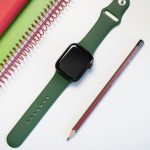- NASA’s Osiris-Rex spacecraft briefly landed on an asteroid called Bennu on Tuesday to collect samples of its rock.
- But now a valve on the probe’s sample-collecting arm won’t close, and the bits of asteroid it grabbed are floating away.
- The team is frantically trying to store the asteroid dust in a safer place before they lose much more.
- Visit Business Insider’s homepage for more stories.
NASA’s Osiris-Rex mission successfully scooped up a sample of fine dust and grit from an asteroid called Bennu on Tuesday. It was the first time NASA had ever gathered a sample from an asteroid.
But the spacecraft’s sample-collecting arm seems to have gathered so much asteroid material in that maneuver that part of the valve designed to keep the sample contained won’t close. Now, bits are falling out.
“There’s so much in there that the diaphragm that is supposed to keep the sample in is open,” Thomas Zurbuchen, associate administrator for the Science Mission Directorate at NASA, said in a briefing on Friday.
Now the Osiris-Rex team has to figure out how to hold onto the rest of the material the probe has gathered. So instead of weighing the sample, the planned next step of the process, they’re opting to stow the sample immediately in the spacecraft’s built-in Sample Return Capsule.
That should “preserve and prevent any future mass loss,” Dante Lauretta, the Osiris-Rex mission lead, said at the Friday briefing.
“We were almost a victim of our own success here,” Lauretta added.
A ‘touch-and-go’ mission
On Tuesday, Osiris-Rex slowly descended about 3,280 feet (1 kilometer) and avoided a hazardous rock field in order to stick its difficult landing on Bennu’s surface. It successfully maneuvered past a two-story boulder that mission controllers call “Mount Doom,” reaching Bennu’s surface with its sample-collection arm stretched down properly.
Osiris-Rex had twice rehearsed this descent, practicing “basically everything except for the final two minutes,” according to Mike Moreau, a project manager.
Once on Bennu, Osiris-Rex’s arm shot nitrogen gas out of a bottle to stir up the fine dust, called regolith, beneath it. In the disturbance, researchers estimate, hundreds of grams of material were collected in the tool at the end of the arm.
NASA/Goddard/University of Arizona
Then approximately six seconds after touchdown, Osiris-Rex fired its thrusters to push itself away from Bennu once again.
But once the probe was safely back in Bennu’s orbit, mission controllers observed material falling out of its sample-collecting arm. So far, it has already lost between 5 and 10 grams of material (NASA needs 60 grams for a minimum sample).
“I was immediately concerned because this is loss of sample, and loss of sample mass,” Lauretta said.
It’s possible that Osiris-Rex could lose all of its sample if the team doesn’t act quickly enough.
NASA
The sample should reach Earth in September 2023
The $1 billion Osiris-Rex spacecraft — short for the Origins, Spectral Interpretation, Resource Identification, Security-Regolith Explorer — has been orbiting Bennu since December 2018.
The 1.7-ton robot spent much of that time looking for the perfect spot to suck up some extraterrestrial dirt during its planned “touch-and-go” maneuver. It settled on a location named Nightingale, a small, unobstructed, and relatively smooth area covered in regolith.
Once NASA scientists are confident that a big enough sample has been collected and stored – the probe needs at least 2.1 ounces, or about a small bag of potato chips’ worth of mass — Osiris-Rex can begin its long journey home. The trip is targeted to start in March 2021, with the spacecraft slated to reach Earth on September 24, 2023.
The rock Osiris-Rex collected is likely to be very different from any alien rock samples we already have here on Earth. Meteorites sometimes fall through Earth’s atmosphere and land on the ground, but they have to be durable to survive that. Many of our solar system’s asteroids, however, may be composed of more fragile rock like that on Bennu.
Although it appears Osiris-Rex gathered far more than the mission’s minimum sample mass requirement, NASA scientists are now racing to make sure they can keep what they have by tucking it away safely.
“Time is of the essence,” Zurbuchen said.
Powered by WPeMatico






